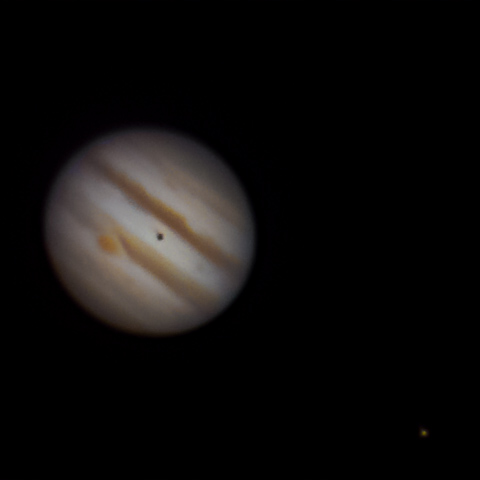Jupiter is the largest planet in solar system; however the weight of this gas giant is only 1/1000 of the Sun. It has more than 60 moons, which were very important for formulation of modern way how we understand the universe. Four biggest moons Io, Europa, Ganymede and Callisto are visible even by small telescope. Galileo was the first who saw them and noticed that next night they are on different position, thus they must be orbiting the Jupiter. This led to the confirmation of Copernicus heliocentric theory. Obviously this was not accepted very well at that time and Galileo had to face the problems with the inquisition.
Planetary photography is completely different to deep space imagining. Since the planets are bright, the exposure time doesn’t have to be long, however the planets are small, therefore the seeing (turbulences in the atmosphere) is the biggest enemy. One needs: long focal length, short exposure times (aperture, aperture, and aperture) and as many pictures as possible.
This picture is a stack of 2000 pictures together. It’s one year old, because this year the seeing hasn’t allow me to do better pictures with my latest equipment. The red spot is visible as well as the eclipse cause by the moon Io.
| Telescope: | Newton 254/1000 mm |
| Aperture: | 254 mm |
| Focal length: | 5000 mm |
| Mount | Skywatcher EQ-6 |
| Autoguiding | - |
| Camera: | Imaging Source DFK21 |
| Corrector: | TeleVue Barlow Powermate 5x |
| Filters: | - |
| Exposure: | 2000 x 1/80s, gain 956 |
| Date: | 2015-03-05 |


The jupiter is great! Thanks for the photo!
Dík!